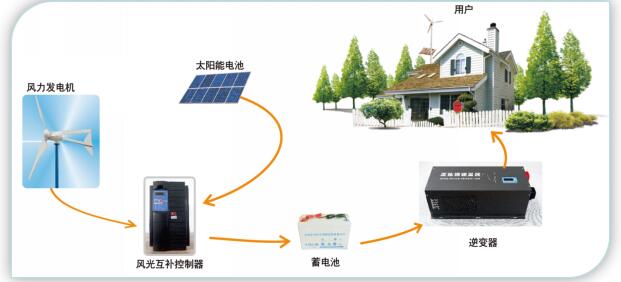Nanjing Oulu Electric Wind-Solar Hybrid Power System Introduction
Nanjing Oulu Electric Wind-Solar Hybrid Power System
The wind-solar hybrid power system generates electricity through both wind turbines and solar PV modules. Solar arrays and wind turbines produce AC power, which is converted to DC by a hybrid controller and stored in battery banks. When power is needed, an inverter transforms the stored DC power back into AC for distribution to electrical loads.
System Components:
Wind turbine
Solar PV array
Hybrid controller
Pure sine wave inverter
Battery bank
1. Complementary Characteristics
Solar and wind energy exhibit strong temporal and regional complementarity:
Sunny days: High solar output, lower wind
Cloudy/rainy days: Low sunlight but increased wind
Nighttime: No solar power, but temperature differences generate wind
This natural synergy ensures continuous, stable power supply.
2. Working Principle
Daytime (sunlight): Solar panels convert light to electricity, powering loads and charging batteries.
Night/rainy (windy): Wind turbines generate power from wind, supplying loads and storing excess energy.
No sun/wind: Batteries discharge stored power to maintain operation.
3. System Structure Diagram
[Diagram description: Integration of wind/solar generation → Controller → Battery storage → Inverter → Load]

4. Operating Modes of Nanjing Oulu Electric Wind-Solar Hybrid Power System
The standalone wind-solar hybrid power system operates in the following modes:
Hybrid Power Mode: Both solar PV arrays and wind turbines supply energy simultaneously.
Windless Mode: When wind speed is insufficient, only solar PV arrays provide power for loads and battery charging.
Sunless Mode: Only wind turbines operate to generate electricity.
Battery Discharge Mode: When neither wind nor solar is available, the backup battery bank supplies power to the loads.
5. Application Areas of Nanjing Oulu Electric Wind-Solar Hybrid Power System
Residential and productive electricity in off-grid rural areas
Outdoor semiconductor lighting
Navigation aids (e.g., buoys, lighthouses)
Power supply for surveillance cameras
Oil and gas field operations
Telecommunication base stations
Water pumping for irrigation
Energy storage power stations
